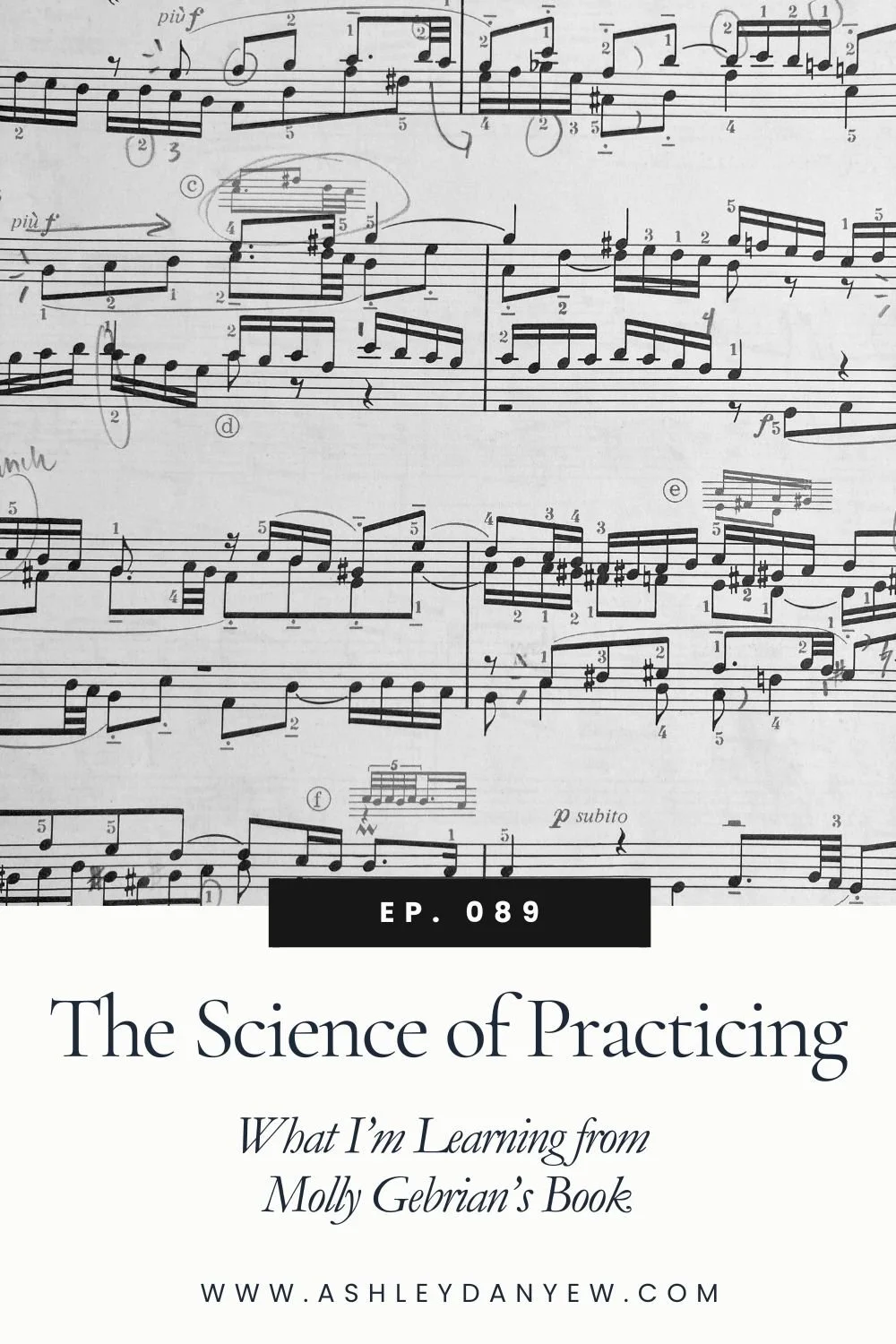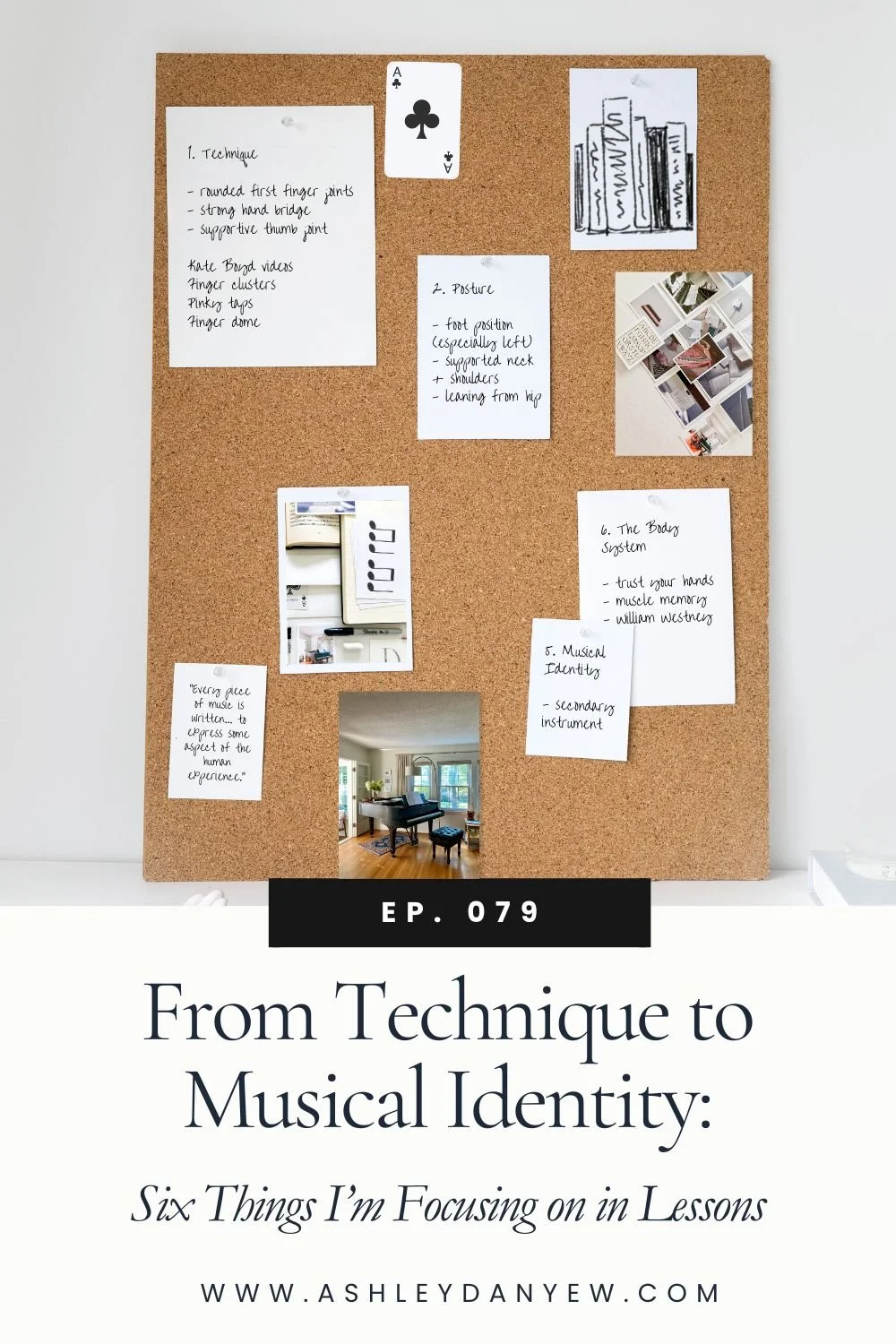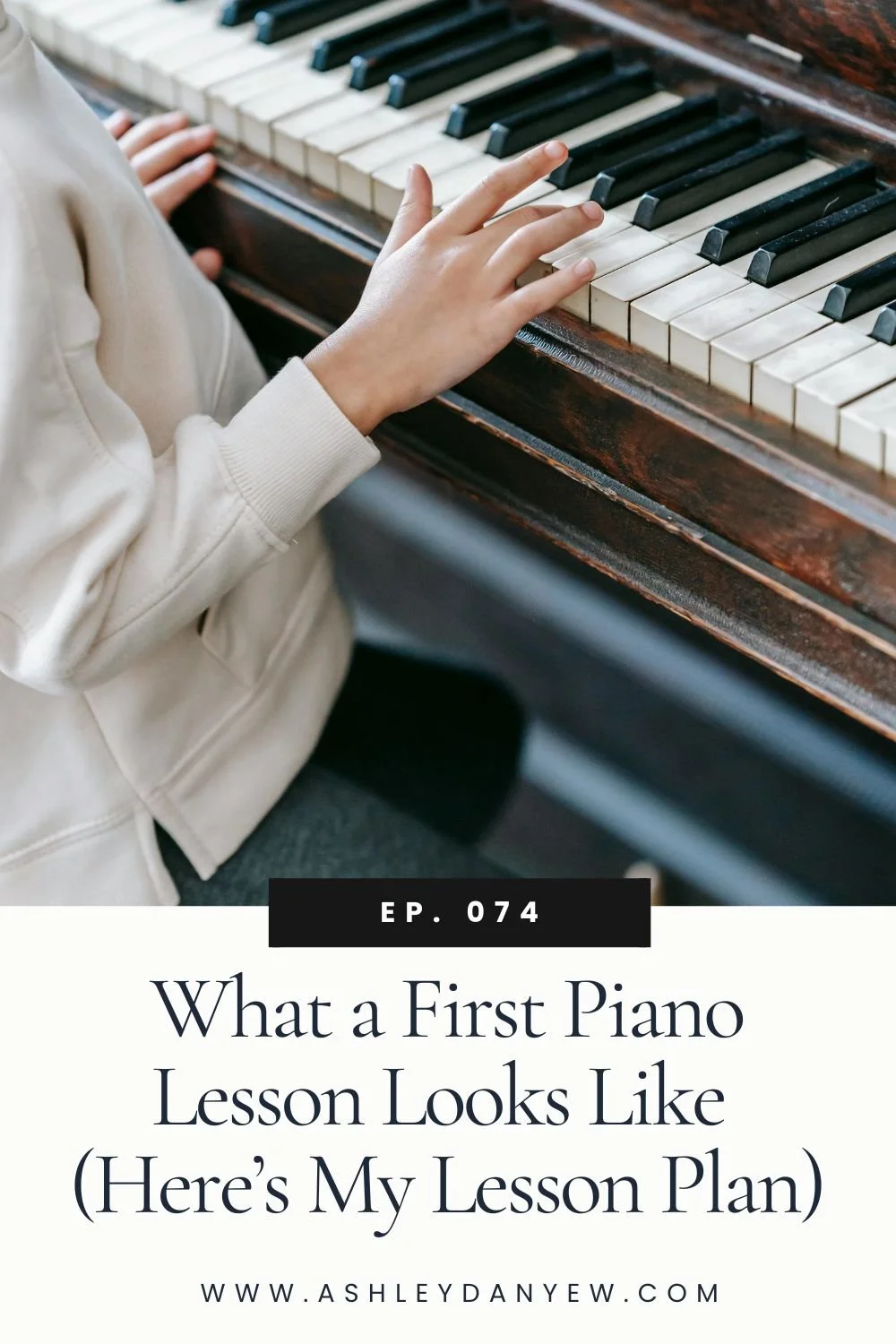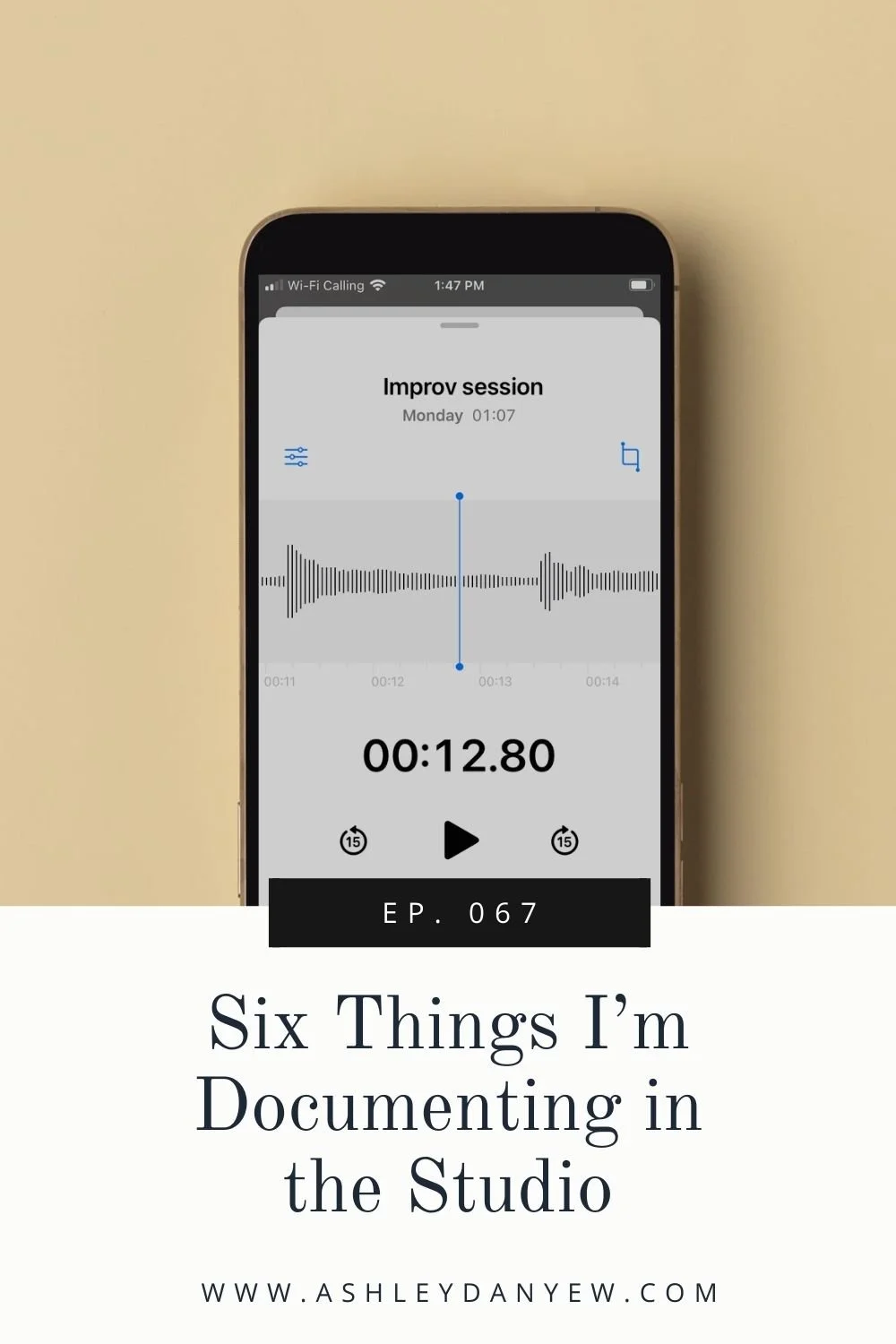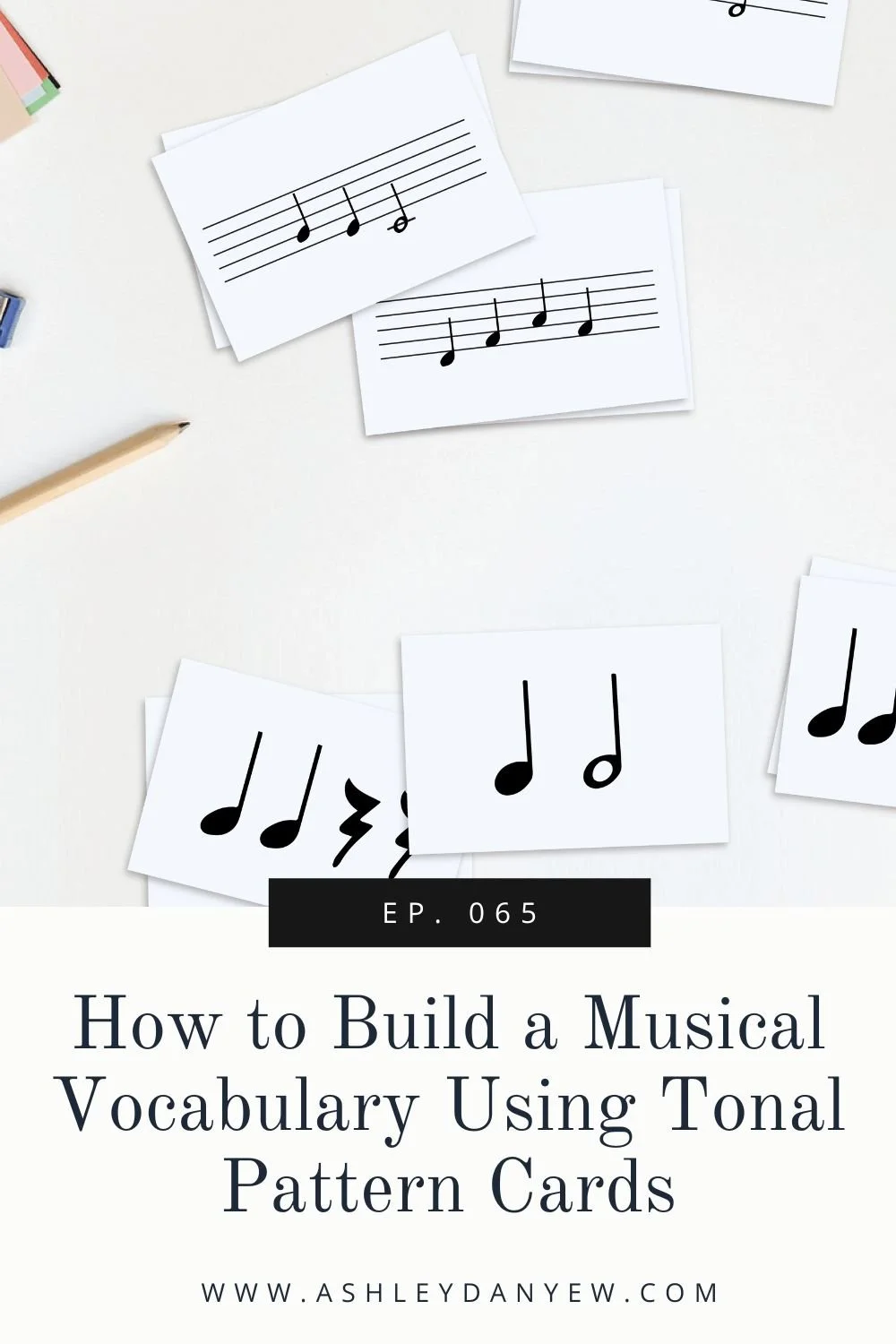Resources Mentioned
*Disclosure: I get commissions for purchases made through some of these links.
The Benefits of Rote-Teaching (Dr. Julie Knerr & Katherine Fisher)
Classroom Activities for Teaching a Rote Song (Gordon Institute for Music Learning)
Methodology: Sequence, Whole/Part/Whole Curriculum, and Other Central Principles (Gordon Institute for Music Learning)
Piano Safari - a beginning piano method
Let’s talk about rote learning.
Rote learning is a method of instruction based on imitation and repetition. This is useful for things like multiplication tables and the ABCs, but it’s also beneficial for learning a new language and yes, learning music. And in a day and age when we’re doing more online teaching, this is especially important.
When we learn something by rote, we start by listening, then experiencing it ourselves — imitating what we see or hear, listening and watching again, and repeating it until we can do it on our own.
Why is rote learning important?
The five primary methods of music teaching and learning, as developed by Kodaly, Dalcroze, Orff, Suzuki, and Gordon are all built on the principle of rote-first instruction (source). This means that children are taught through imitation, listening, and active experience before being asked to read music notation.
The Gordon Institute for Music Learning, founded to advance the research of music educator Edwin Gordon, states that through rote-learning experiences, "Students build a solid foundation of aural and performing skills through singing, rhythmic movement, and tonal and rhythm pattern instruction before being introduced to notation and music theory.” (source)
Similarly, researchers and piano pedagogues Dr. Julie Knerr and Katherine Fisher, authors and creators of the Piano Safari method series advocate, "Music is an aural art, so students must learn music with their ears as well as with their eyes. A balance between pieces taught by notation (eye) and those taught by rote (ear) will help students deeply understand and fully express music.” (source)
Today, I want to talk about three of the primary benefits of rote learning in music education and offer some practical, step-by-step techniques for incorporating rote learning into your teaching approach.
The Benefits of Rote Learning:
Here are three of the primary benefits of rote learning.
It builds musical understanding.
Teaching a song or piece by rote helps children develop an awareness and understanding of musical patterns, or meaningful groups of notes.
Dr. Julie Knerr and Katherine Fisher wrote, "Students who are taught by rote come to an early realization that music is composed of patterns and a logical structure. They learn Rote Pieces in larger groupings of notes rather than one note at a time. They notice repeating ideas and variations of these ideas more easily when the distraction of reading the score is removed.” (source)
It broadens awareness of musical styles and sounds.
When learning a language, children are able to imitate much more complex words and phrases than they are able to read on their own. The same is true in music. Children are able to listen and respond to music that is much more complex than they are able to sing or play with notation. As such, this provides an opportunity to expose them to a wider variety of musical styles and sounds.
As Edwin Gordon observed, "We understand what something is by comparing it to what it is not” (source). As music educators, that means the more diversity in tonal and rhythm patterns, phrase structure, tonality, tempo, range, and form we can provide in our teaching, the more learners will be able to develop their musical vocabularies and build discrimination skills.
It develops listening skills.
As I mentioned before, music is an aural art. Though we often think of the visual components of music learning, it involves both the ear and the eye. Creating opportunities to focus solely on listening skills is a valuable part of the learning process, especially at the beginning. It’s important to separate these two experiences (aural and visual) and develop them individually.
Rote learning provides an opportunity for learners to focus solely on the aural components of a song or piece without the distraction of the visual components.
How to Incorporate Rote Learning Into Your Teaching Sequence:
Since rote learning is based on repetition, it's important to think about ways to prepare, introduce, and reinforce new musical concepts over the course of several weeks.
Spend some time studying the music you plan to teach—you'll be able to teach much more effectively if you know the material really well. Remember, since children aren't looking at the music when they’re learning by rote, they'll be focused on you. You'll be able to keep them engaged and teach more effectively if you don’t have to keep looking at the score, so I suggest having the rote piece memorized or mostly memorized.
Think about ways to prepare new concepts such as melodic or rhythmic patterns, dynamics, meter, etc. in advance. Can you work them into warm-ups somehow? Can you incorporate a new rhythm pattern or two into a group gathering activity?
Prepare new concepts without drawing too much attention to what they are, initially. Simply have children experience the new meter, echo the rhythm or melodic pattern, explore the dynamic changes in some way.
This way, by the time you introduce the rote song or anthem a week or two later, some elements will already be familiar to them.
Here are a few quick and easy strategies for teaching a song or anthem by rote:
1. USE THE WHOLE-PART-WHOLE SEQUENCE
Sing or play the song or piece in its entirety (from memory, if possible) before breaking it into patterns and individual phrases. Edwin Gordon observed, "A class may need to hear a song four to six times before most students are able to sing it accurately. Keep them actively involved in the listening process by adding a new task to each repetition” (source).
Gordon outlines a sequence of eight steps that include listening, feeling the macrobeat and microbeat, identifying the resting tone or tonic, audiating the song (thinking it silently), singing without accompaniment, and singing with accompaniment.
Another useful approach is to ask a series of thoughtful questions to guide learners in listening each time. Ask the question, demonstrate the song or piece again as they listen, then discuss the answer. Here are some questions I ask my students:
What dynamics do you hear?
What types of notes do you hear? (e.g. long, short)
Are there any rests in this song?
Do you hear any patterns that are repeated?
Do you hear any repeated notes?
Do the notes in this phrase go up or down?
Do the notes in this phrase move by step or skip?
For piano students, you might ask more specific questions like:
Does this piece begin with LH or RH?
Which finger plays first?
How many times do you hear Middle C? Treble G?
Is the sound smooth and connected or short and separated? Or both?
Once they've heard the whole song or piece several times, sing or play a short phrase or pattern and invite them to imitate.
2. CHANT THE RHYTHM
Keep a steady beat on your lap and have children imitate. Chant the rhythm, phrase by phrase, on a neutral syllable such as "bah" or rhythm syllables such as "ta" and "ti-ti," if you've introduced them, and have children echo you for each phrase. Repeat as needed. Talk about patterns that are the same and different.
3. SING ON A NEUTRAL SYLLABLE
If teaching a song by rote, establish tonality on the piano (play a I-IV-V7-I sequence in the key you are singing in) or by singing a broken triad: 1-3-5-3-1. When first introducing parts of the song, sing on a neutral syllable such as "doo" or "bum" or solfege, if you've introduced it. Start with 2-measure patterns, call and response, then work up to 4-bar phrases. Repeat as needed. Use visuals to help with intervals, direction of the lines, phrasing, etc.
4. Chant THE TEXT
Chant the text in rhythm, phrase by phrase, and have the students echo back. Point out words that we sing differently than we speak (e.g. "ever" vs. "ev-ah"). Spend a few minutes talking about what the text means and explaining any words that may be unfamiliar.
5. SING With Text
Once you've introduced the musical phrases (rhythm and melody separately) and read through the text, sing a phrase or part of a phrase with text and have children echo back, call-and-response style. Start with 2-measure patterns or 4-bar phrases and work up to longer sections. Repeat as needed until children can sing the phrases on their own.
If you’re teaching a piano piece, play a phrase or part of a phrase and have children play it back, call-and-response style. Repeat as needed until children can play the phrases on their own.
A Note on Singing:
Now, a quick note about singing: I recognize that some of you may not be working with choirs or elementary music classes and you’re teaching instrumentalists. Rote learning in this context may look a little different than it does in choir or a group setting, especially if you work one-on-one.
Again, you can still give your students things to listen for as you play through the piece multiple times to get in those repetitions and then play a pattern or phrase for them to echo back. But I will say, Gordon advocated that even instrumentalists learn and experience singing their pieces. If the piece doesn’t have text, use a neutral syllable.
It's important to have your students experience singing their pieces and learning by rote that way and then transfer the skills they gain from that experience to playing on their instrument.
I’d love to hear from you:
Do you use rote learning in your teaching method? What strategies have you found to be most helpful?




